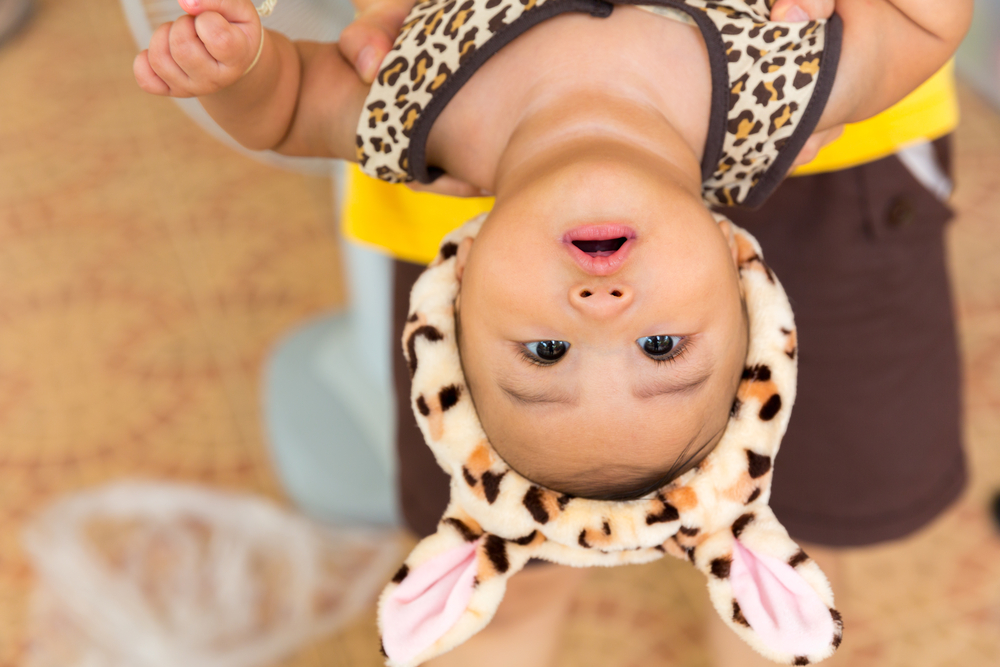Have you ever caught your little one joyfully hanging upside down, giggling with delight? It’s a sight that can leave any parent puzzled yet amused. Why does my child always hang upside down? This playful behavior isn’t just random; it’s part of their exploration and development. From the excitement of seeing the world in a new way to the physical benefits for their developing bodies, this quirky habit has more to it than you might think.
- Why does my child always hang upside down?
- Possible Explanations for Why Babies Enjoy Hanging Upside Down
- Is Hanging Upside Down a Normal Behavior?
- Hanging Upside Down and Autism: Is There a Connection?
- Benefits of Hanging Upside Down for Babies
- Common Concerns and How to Address Them
- How Long Can You Be Upside Down Without Any Harm?
- When Should You Be Concerned?
- Tips for Safely Incorporating Inverted Play into Baby's Routine
- Engaging Activities for Different Baby Stages
- Fun Ways to Hang Upside Down Safely
- FAQ's
Let’s dive into why babies love flipping over and what makes this seemingly silly act essential for their growth and sensory experiences.
Why does my child always hang upside down?
It’s not uncommon to see your little one hanging upside down. This playful act is often driven by curiosity and exploration. Babies are naturally inclined to test their boundaries, and flipping over may feel like an exciting adventure.
When they hang upside down,
- They experience a rush of new perspectives.
- The world looks different from this angle, which can be intriguing for tiny explorers.
- This position also stimulates the vestibular system, aiding in balance and coordination development.
- It helps them understand their body in relation to gravity.
- You might notice that it brings joy; laughter is common when they’re flipped around! Their giggles reflect pure delight as they discover how fun being inverted can be.
So next time you catch your child enjoying this activity, remember: it’s part of their developmental journey filled with wonder and excitement.
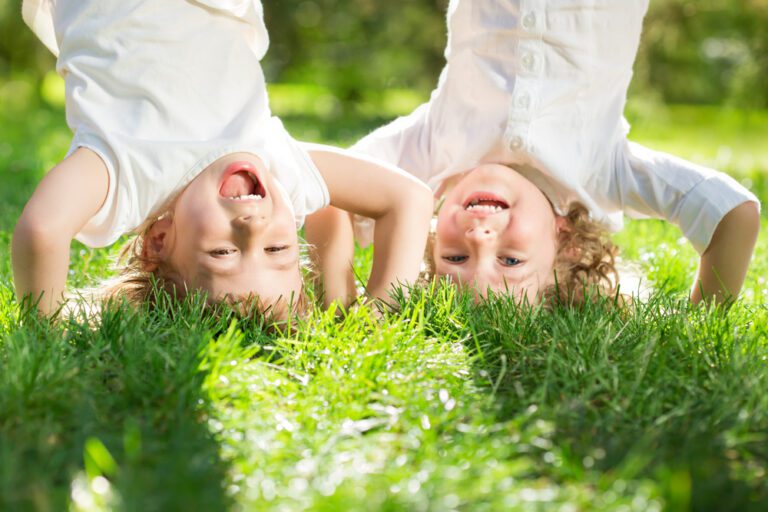
Possible Explanations for Why Babies Enjoy Hanging Upside Down
Babies are naturally curious creatures. Their world is filled with new sights and sensations, many of which are best experienced from different angles.
The position stimulates the vestibular system, crucial for balance and coordination. This playful inversion can be exhilarating as babies discover their own movement abilities while gaining confidence in how their bodies work.
Additionally, some infants have an instinctual drive to explore sensory experiences. Upside-down play can be comforting or even fun for little ones who enjoy the feeling of being suspended in space.
It’s also worth noting that this behavior often comes from pure joy. The laughter and giggles during these moments reveal just how much delight babies derive from turning things on their head—literally!
1. The Vestibular System & Sensory Play
When a baby hangs upside down, their vestibular system, the part of the inner ear responsible for balance and spatial orientation, gets a workout.
Dr. Jane Smith, pediatric occupational therapist, explains:
“Inverting their body helps children develop proprioception (body awareness) and calms their nervous system. It’s like a natural sensory therapy!”
This explains why toddlers love toddler doing downward dog or sitting upside down on couch. Even newborns benefit: while do newborns see upside down? (yes, initially!), their vision adjusts within weeks, but the vestibular stimulation remains a source of joy.
2. Developmental Milestones & Curiosity
Ever noticed your baby looking between their legs? This quirky move helps them understand their body’s position in space. Hanging upside down also boosts confidence as they conquer gravity, think of it as their first “extreme sport”!
Is Hanging Upside Down a Normal Behavior?
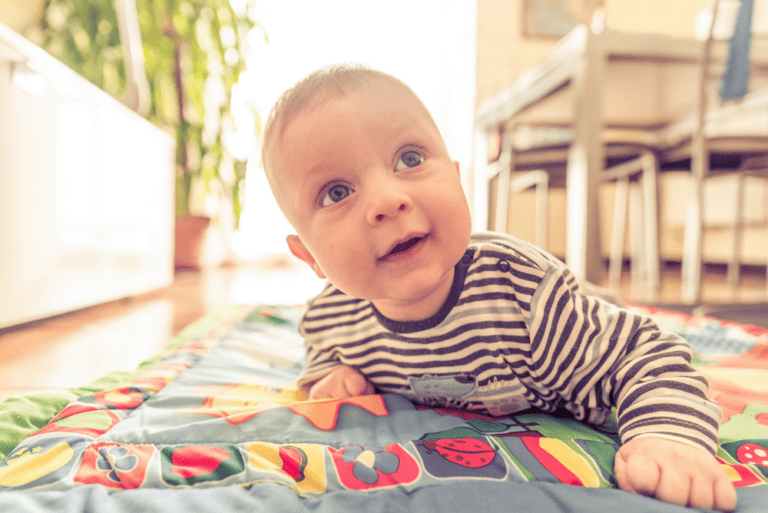
Many parents wonder, “Is it bad for babies to look upside down?” The good news is that a baby hanging upside down is nothing to worry about. It’s common for children to experiment with different physical positions as they develop and learn more about their body’s capabilities.
Many parents notice their babies engaging in seemingly unusual behaviors that are part of regular play. As long as the baby is enjoying the activity and not causing any harm, it’s seen as a normal stage in their physical and sensory exploration.
However, infant upside-down activities, like playful hanging, should never be prolonged or done in a risky environment.
Hanging Upside Down and Autism: Is There a Connection?
Parents may ask whether hanging upside down is a sign of autism. The answer is that a baby hanging upside down alone is not an indication of autism.
Autism spectrum disorder (ASD) is a developmental disorder that can affect communication, behavior, and social interactions. Children with autism exhibit unique and repetitive behaviors. Still, when it comes to a baby liking to hang upside down, this behavior is generally not considered a definitive sign of autism.

Closer observation may be required if this action is coupled with other specific behavioral markers. Signs of autism usually involve:
1. Lack of social interaction
Babies with autism may not engage with others in typical ways. For instance, they may not make eye contact, smile in response to others, or show interest in social games like peek-a-boo.
2. Repetitive behaviors
While hanging upside down might be a fun and spontaneous act for many babies, if a child consistently engages in this action rigidly or repetitively, it could indicate ASD. Repetitive body movements, such as flapping hands or rocking, are often linked to autism.
3. Sensory Sensitivity
Babies with autism might have heightened sensitivity to sensory input, and some may seek out intense sensory stimulation, such as spinning, bouncing, or even hanging upside down frequently, to self-regulate their sensory experience.
4. Delayed language and communication skills
A baby who enjoys hanging upside down but is also experiencing significant delays in babbling, cooing, or other forms of communication might exhibit signs of ASD.
Benefits of Hanging Upside Down for Babies
Hanging upside down can support childs development. This playful position stimulates their vestibular system, which plays an essential role in balance and spatial awareness.As they hang upside down, babies engage core muscles, promoting strength and coordination. The gentle inversion encourages blood flow to the head, which can help with cognitive function and alertness.

- See the world from new perspective
- observing the world while inverted allows them to explore shapes and colors differently
- Improves balance and coordination
- Enhances spatial awareness
- Strengthens core and neck muscles
- Boosts blood circulation
- Provides sensory input for children with autism and sensory processing issues
Many babies enjoy the thrill of being in such an unusual posture. It often elicits laughter and joy as they interact with parents or caregivers during playtime. This connection fosters emotional bonds while encouraging physical exploration through movement.
Common Concerns and How to Address Them
Many parents worry when they see their baby hanging upside down. Safety is a primary concern. Ensure your little one has a soft surface beneath them, like a play mat or carpet. This makes any accidental falls less scary.
Other parents might wonder if this behavior signals something more serious, such as autism. It’s important to remember that enjoying inverted positions is common for many infants and doesn’t necessarily indicate developmental issues.
If your child seems overly fixated on being upside down, it may reflect their sensory-seeking nature. Providing opportunities for various types of movement can help balance their need for stimulation without overwhelming them.
Some babies might experience discomfort while hanging upside down due to reflux or gas pressure. If you notice signs of distress during these moments, consult with your pediatrician for tailored advice and reassurance about your baby’s health and wellbeing.
How Long Can You Be Upside Down Without Any Harm?
While hanging upside down is fun, moderation is key. How long can you safely hang upside down? Experts recommend:
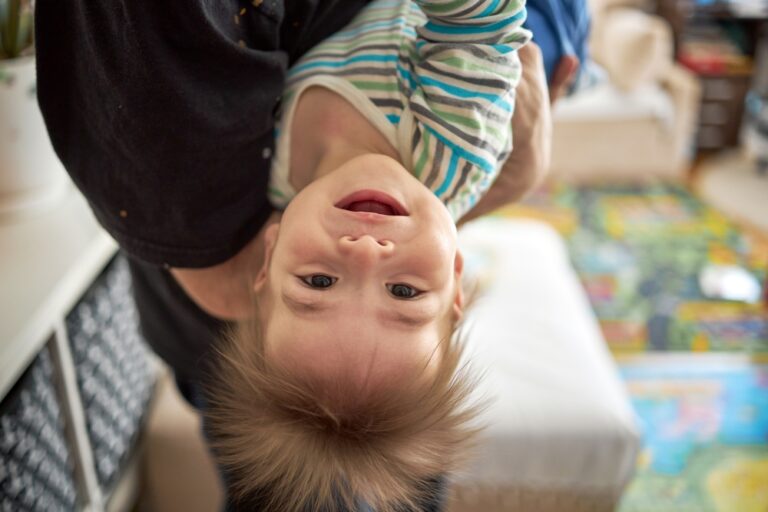
- Infants: Only a few seconds during gentle play (never unsupervised!).
- Toddlers/Children: 1-2 minutes max, with breaks.
- Adults: 3-5 minutes for light inversions (like yoga).
Warning: What happens if you hang upside down for 2 hours? Prolonged inversion can cause blood pressure spikes, dizziness, or even retinal damage. Dr. Emily Ross, pediatrician, warns:
“Never leave a child inverted for more than a few minutes. Always prioritize safety over fun.”
For most people, hanging upside down for 1-2 minutes is safe. However, staying in an upside-down position for too long can lead to dizziness, increased blood pressure, and even fainting.
What Happens If You Hang Upside Down for 3 Hours?
If someone remains upside down for too long, like 3 hours or more, they may experience serious health risks, including:
- Increased pressure on the brain
- Reduced oxygen flow
- Blood pooling in the head
- Potential stroke or cardiac issues
When Should You Be Concerned?
While most babies enjoy hanging upside down purely out of curiosity and fun, there are instances where you need to be more observant. Here are some situations where you may want to seek advice:
1. Repetitive and Uninterrupted Behavior
If your baby insists on being hung upside down frequently and becomes distressed if they’re not in that position, it could indicate a need for self-regulation or sensory stimulation that may be worth exploring further.
2. Accompanying Developmental Delays
It could signal an underlying issue if your baby enjoys hanging upside down but shows physical, social, or verbal developmental delays.
3. Unresponsiveness to Social Cues
Babies with autism often show reduced interest in social interaction. If your child seems uninterested in connecting with others or shows a lack of responsiveness to social stimuli, this, combined with repetitive behaviors, may raise concerns.
Tips for Safely Incorporating Inverted Play into Baby’s Routine
Creating a safe environment for inverted play is essential. Start by ensuring the area is free of sharp objects or hazards that could harm your baby during their playful antics.
Use soft surfaces, like carpets or mats, to cushion any falls. This will help reduce fear and encourage exploration. A gentle grip around their waist can provide security as you hold them upside down.
Introduce short sessions at first; babies can quickly become overstimulated. Watch for signs of discomfort or fatigue, and be ready to switch activities if needed.
Incorporate hanging moments into daily routines, such as during diaper changes or playtime with colorful toys overhead. This adds an element of fun while promoting development in balance and coordination.
Always supervise closely to ensure safety remains a top priority as they explore being upside down in new ways.
Engaging Activities for Different Baby Stages
I have listed down engaging activities for babies at different stages. Babies at different ages require varied stimulation to support their growth. Here are some baby activities for different stages that align with their developmental needs:
| Baby Age | Engaging Activities |
|---|---|
| 3-Month-Old | • Gentle tummy time • Laying on their back • Sensory exploration with soft toys • Occasional upside-down play while lying on a parent’s lap |
| 5-Month-Old | • Gentle upside-down play (lifting baby while supporting neck and head) • Object grabbing and head control exercises |
| 8-Month-Old | • Rolling around • Sitting up • Hanging head upside down off furniture (supervised) • Introduction to balance through upside-down play |
| 10-Month-Old |
• Crawling |
Fun Ways to Hang Upside Down Safely
Want to enjoy the benefits of hanging upside down without risks? Here are some safe and fun ways: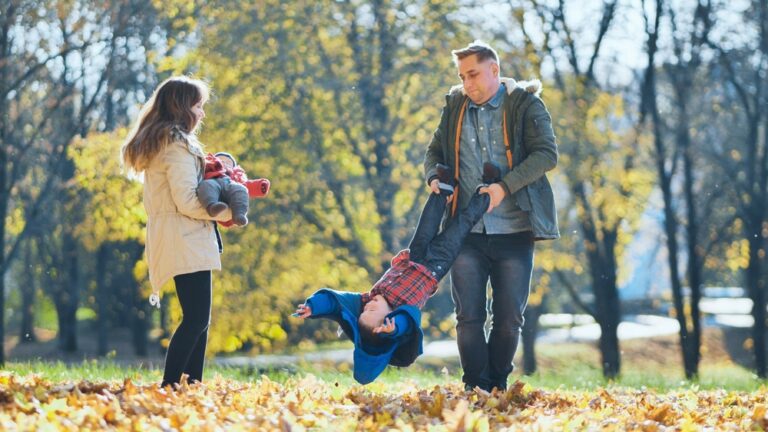
1. Using a Hang Upside Down Chair
These specially designed chairs allow you to recline and enjoy mild inversion therapy.
2. Hanging Upside Down Apparatus
Devices like inversion tables and aerial yoga hammocks provide controlled inversion benefits.
3. Lying Upside Down on a Couch
Sitting upside down on a couch or letting your head hang off the edge is a simple way to experience mild inversion.
4. Upside Down Therapy
Some therapy centers offer upside therapy in their current location to help with spinal decompression and blood circulation.
FAQ’s
1. Why is my baby doing the downward dog position?
Babies do the downward dog position to strengthen muscles and explore movement, often before crawling. It’s a normal developmental stage.
2. Why does my baby turn upside down?
Babies turn upside down to explore their vestibular sense (balance), strengthen muscles, and satisfy their curiosity about different perspectives.
3. Do autistic kids like being upside down?
Some autistic children enjoy being upside down as a form of vestibular stimming, providing sensory input they find calming or stimulating. It’s not true for all autistic children, and many neurotypical children also enjoy it.
4. Is hanging good for babies?
Supervised, brief hanging can be good for babies to develop grip and upper body strength. It must always be done safely with adult support.
5. How do you know your child isn’t autistic?
You can’t definitively “know” without a professional evaluation if you have concerns. Typical signs a child may not be autistic include consistent eye contact, responding to their name, and typical language and social development.
6. What is vestibular stimming?
Vestibular stimming is repetitive movement (like spinning, rocking, or being upside down) that provides sensory input to the balance system. It’s often used for self-regulation, especially by those with sensory processing differences.
7. What is a sensory seeker?
A sensory seeker is someone whose brain craves more intense or frequent sensory input than typical. They actively seek experiences like loud noises, strong flavors, or lots of movement.
8. Why does my baby hang low?
If your baby seems floppy or has trouble holding their head up, “hanging low” could indicate low muscle tone; consult your pediatrician. Otherwise, if they’re just relaxed while exploring, it’s likely normal.
9. Why is my baby looking upside down?
Babies look upside down out of curiosity, to experience new visual perspectives, and for unique input to their developing balance system.
10. Why does my baby want to hang upside down?
Your baby wants to hang upside down to develop their vestibular sense, strengthen muscles, and enjoy the stimulating sensation of a different view.
11. Why do babies turn upside down?
Babies turn upside down to develop their balance system, build strength, and explore the world and their body from new angles.
12. Why does my child always hang upside down?
If your child consistently hangs upside down, they may be a sensory seeker for vestibular input, finding it regulating or enjoyable. As long as it’s safe, it’s generally fine.
13. Is it good for kids to hang upside down?
Yes, in moderation and safely, it’s good for kids to hang upside down. It aids vestibular development, builds core and upper body strength, and improves spatial awareness.




